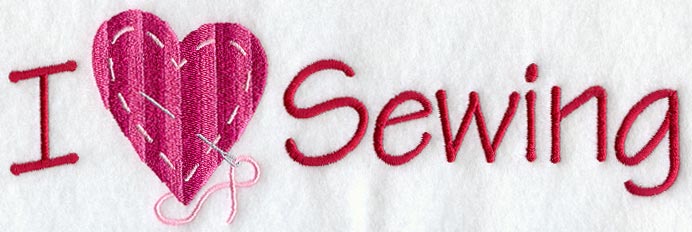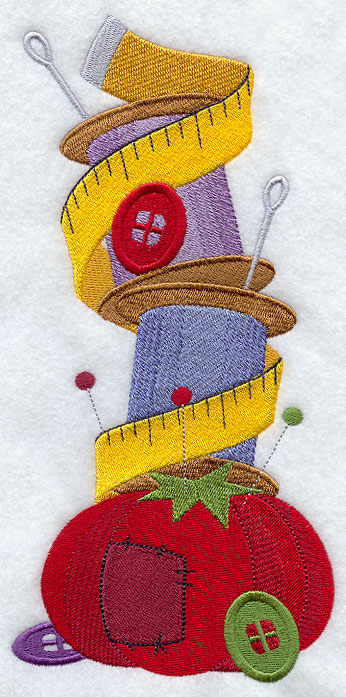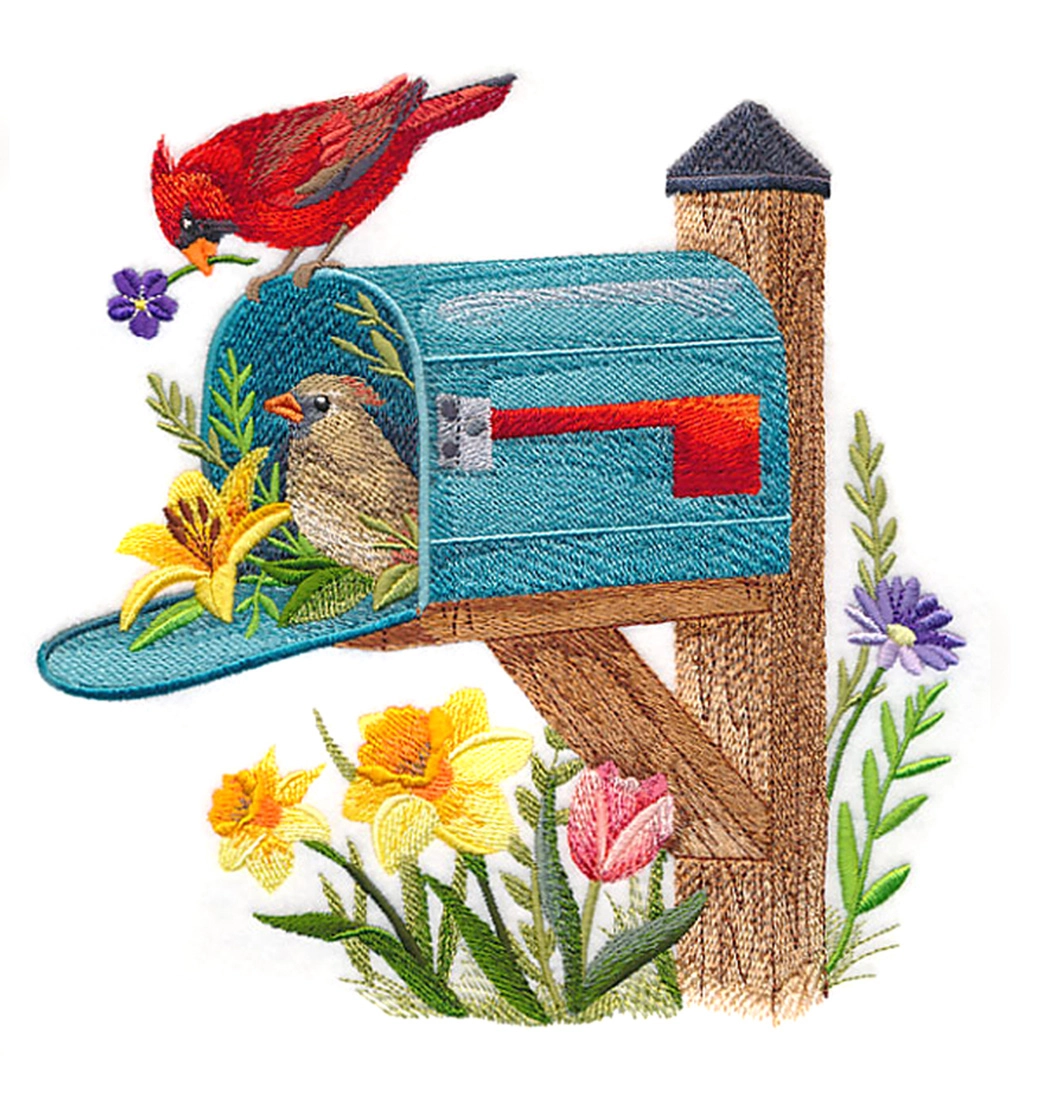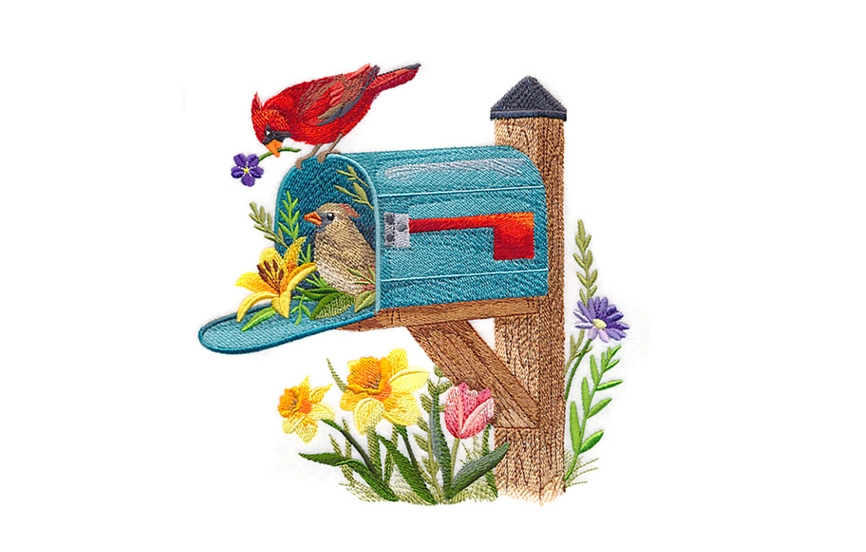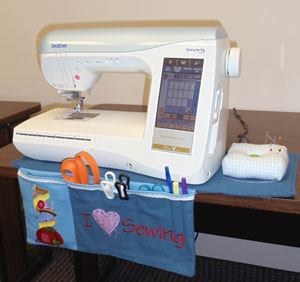
Keep your tools and notions close at hand with this nifty sewing machine apron. The organizer has six pockets to conveniently hold your scissors, marking tools, calculator, and other small items. The sewing machine apron also features a handy pincushion.
Read below for these free project instructions.
Supplies
Supplies Needed:
**3/4 yard sturdy fabric (for pocket section and base section - we used lightweight canvas)
**1/2 yard sturdy fabric (for pocket section and pocket lining - we used lightweight
canvas)
**1/2 yard of cotton fabric (for the bias trim and pin cushion - we used flannel)
**Medium-weight cutaway stabilizer
**Temporary spray adhesive
**Air-erase pen (or other marking tool)
**Polyester fiberfill
**Nylon monofilament thread
**Medium sized button and needle and thread for some hand sewing
Designs used:
Sewing Notions Stack - Medium
I Love Sewing - Large
These designs are also available in other sizes:
Sewing Notions Stack - Large, Small
I Love Sewing - Medium, Small
Pair this clever project with the Crafty Tool Belt and the Fabric Basket for a creatively coordinated sewing room! Here are a few more design suggestions that will bring the look together nicely: Sewing with Sunbonnet Sue, Creative Filigree, Flourishing Stitches, Itching to be Stitching Redwork and Flowers of Creativity.
Designs Used
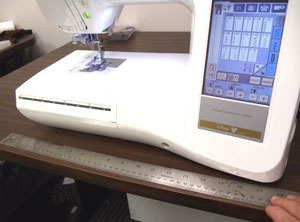
To begin, measure the length of your machine along the front edge (we measured our machine without the embroidery arm attached). Ours measures 18 inches long.
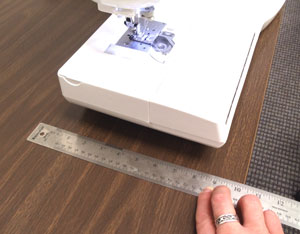
Now, measure the width of the machine from the front to the back. Ours measures 10 inches wide.
We will use these measurements a bit later to size the base section of the apron.
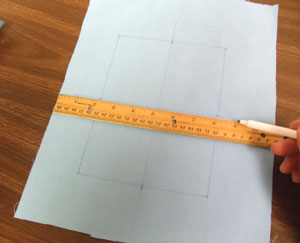
Prepare the fabric for the front left panel of the pocket section. Using an air-erase pen or other marking tool, draw a 6 inch wide by 8 inch high rectangle on the canvas fabric. Measure and mark the center of each side of the shape by measuring and dividing by two. Draw lines to connect the marks; these lines will be used for hooping.
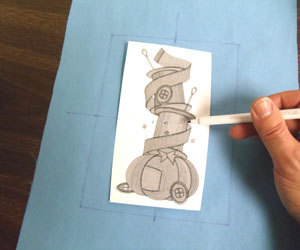
Create paper templates of the designs by printing them at full size using embroidery software. If you don't have embroidery software, you can cut a piece of paper the shape and dimensions of the design to help with placement and centering.
Poke a hole in the center of the template of the left panel design and align it with the center point on the fabric. Make sure the design fits well within the shape - there should be at least one inch of space between the outer edges of the design and the edges of the shape.
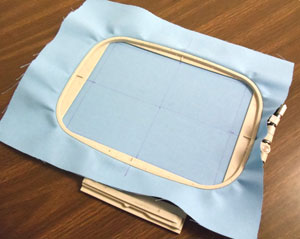
Spray a piece of medium-weight cutaway stabilizer with temporary adhesive and smooth the fabric on top. Hoop the fabric and stabilizer together by aligning the marks on the hoop with the lines on the fabric. Attach the hoop to the machine and load the design. Move the hoop so that the needle is directly over the center point on the fabric and begin embroidering.
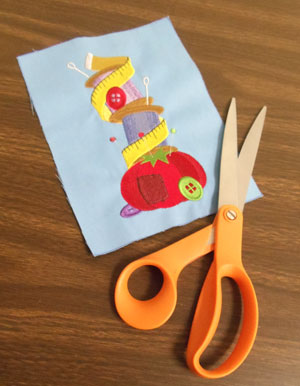
When the design has finished, carefully trim away the excess stabilizer on the back of the embroidery and cut out the shape.
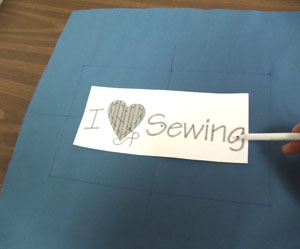
Prepare the fabric for the front right panel of the pocket section by drawing a 12 inch wide by 8 inch high rectangle on the canvas fabric. Measure and mark the center of each side of the shape by measuring and dividing by two. Draw lines to connect the marks and align the template for the right panel design with the center point on the fabric. Make sure the design fits well within the shape - there should be at least one inch of space between the outer edges of the design and the edges of the shape.
Hoop the fabric with medium-weight cutaway stabilizer and embroider the design as you did before. When the design has finished trim away the stabilizer and cut out the shape.
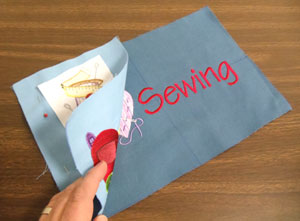
Lay the right panel flat with the right side facing up. Align the left panel on top (right sides facing) with the right edge of the left panel aligned with the left edge of the right panel. Pin in place and sew a 1/4 inch seam along the pinned edge only.
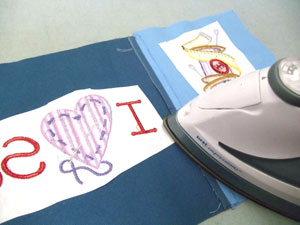
Press the back seam open using an iron.
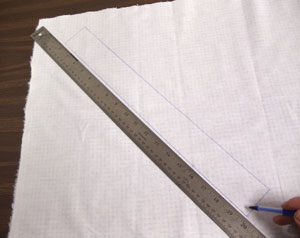
Now, to prepare the fabric for the bias trim, draw a 18 inch long by 2 inch high rectangle diagonally on the cotton fabric (we used flannel) and cut out the shape.
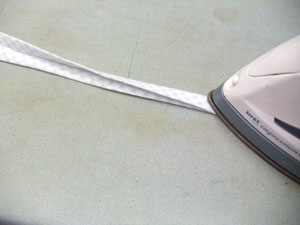
Fold the raw long edges of the shape over 1/2 inch to the wrong side and press. Then, fold and align the folded long edges together and press.
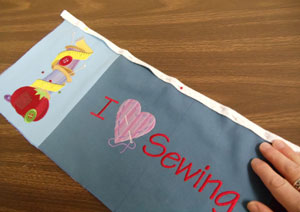
Wrap the trim around the top edge of the front pocket panel and pin in place. Sew a seam along the inner edge of the trim.
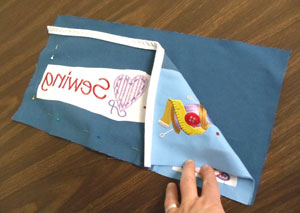
To prepare the fabric for the back of the pocket section, cut a piece of canvas 17 1/2 inches wide by 9 inches high.
Place the assembled front pocket panel on top of the back pocket fabric, right sides together, with the bottom edges aligned and pin in place. Sew a 1/4 inch seam along the side and bottom edges only - leave the top edges open. Then, turn the fabric right side out
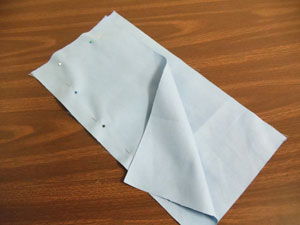
Prepare the fabric for the pocket lining by cutting a piece of canvas 17 1/2 inches wide by 8 inches high for the front piece. Then, cut another piece 17 1/2 inches wide by 9 inches high for the back. Align the bottom edges of the pieces together (with right sides facing). Pin in place and sew a 1/4 inch seam along the side and bottom edges - leave the top edge open.
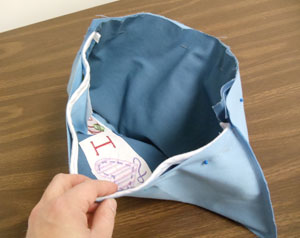
Insert the outer shell of the pocket section inside the pocket lining. Then, align the top edges, pin in place, and sew a 1/4 inch seam along the side "tabs" on both outer edges -- just above the trim and along the top edge of the back (leave a 3 inch gap open for turning). Sew a 1/8 inch seam along the front edge.
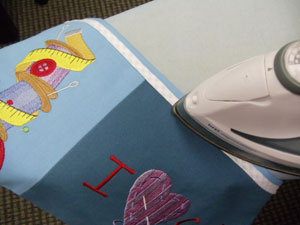
Turn the pocket right side out and insert the lining inside the pocket. Press the seam along the front trim edge and allow about 1/8 inch of the lining to extend up past the trim. Top stitch along the front edge in between the trim and lining.
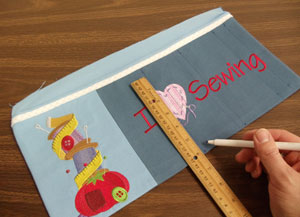
To create the pocket separations, measure and mark in one inch starting at the right edge along the top trim and bottom edge. Measure and mark in another inch, then three inches in from the last mark, and then another three inches. Draw lines to connect the marks - this indicates five pocket spaces along the right pocket panel. Using nylon monofilament thread in the needle (and regular sewing thread in the bobbin), stitch along the lines and along the seam between the left and right panels through all the layers of the pocket.
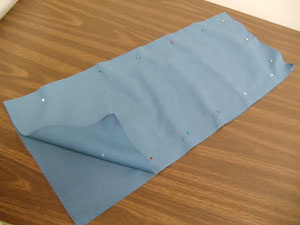
To prepare the base section (where the machine will rest) take your machine length measurement and add 8 inches (for seam allowance and to create an area for the pin cushion). Our machine measured 18 inches long - so, 18 inches plus 8 inches equals 26 inches.
Now, take your machine width measurement and add one inch for a seam allowance. Our machine width measurement is 10 inches - so, 10 inches plus 1 inch equals 11 inches.
Using the width and height dimensions you just calculated, cut two pieces of canvas. Align the two pieces of fabric together, right sides facing, pin in place, and sew a 1/2 inch seam along the short ends and one of the long sides - leave one long side open for turning.
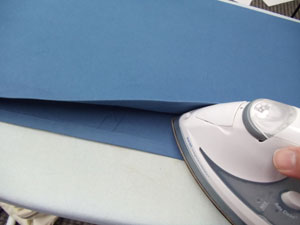
Turn the fabric right side out and press the seams. Also, turn the fabric of the opening in 1/2 inch and press.
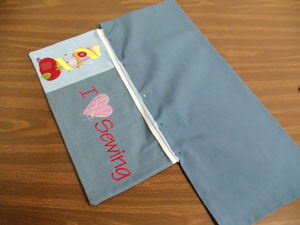
Insert the top edge of the pocket section inside the opening of the base section leaving one inch of space between the pocket and the lower left corner of the base.

Pin in place and top stitch a 1/4 inch seam around the entire outer edge of the base section.
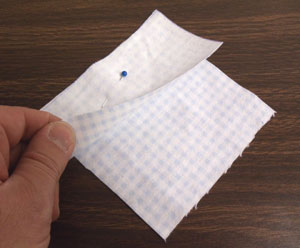
Prepare the fabric for the pin cushion by cutting two pieces of cotton fabric 4 1/2 inches by 4 1/2 inches (for the top and bottom). Also, cut four pieces of fabric 5 inches wide by 2 1/2 inches high (for the sides).
Lay one of the square pieces right side up. Then, align one of the rectangle pieces with one of the sides of the square, right sides together, and with 1/4 inch of the ends of the rectangle extending past the edges of the square. Pin in place and sew a 1/4 inch seam along the pinned edge.
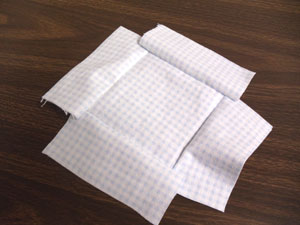
Attach all of the remaining rectangular side pieces to the square just as you did the first piece. Remember to allow 1/4 inch of the side pieces to extend past the edges of the square.
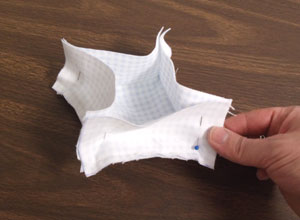
Align all of the short ends of the side pieces together, right sides facing, pin in place, and sew a 1/4 inch seam along each pinned edge starting and stopping 1/4 inch from each end.
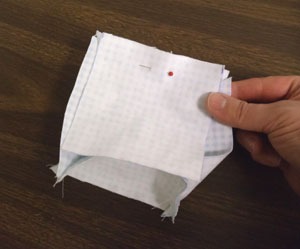
Align one edge of the remaining square piece with one of the side edges - allow 1/4 inch of the side piece to extend past the edges of the square piece. Pin in place and sew a 1/4 inch seam along the pinned edge. Repeat this process along the remaining sides leaving a 2 inch gap for turning.
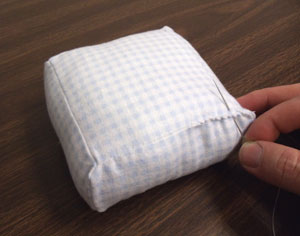
Turn the fabric right side out and stuff the pin cushion with polyester fiberfill until it's firm. Turn the fabric of the opening in 1/4 inch and hand-sew the opening closed.
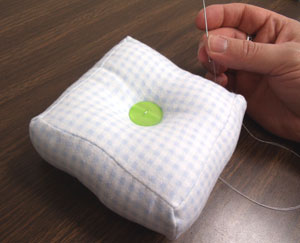
We added a button in the center of the pin cushion by sewing it in place through all the layers.

Hand-sew the pin cushion onto the right side of the base section about one inch from the outer edge and centered front to back.
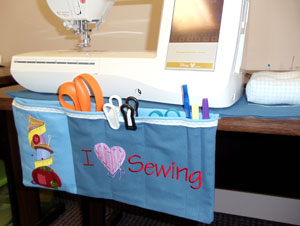
The apron is complete. Add your scissors, marking tools, calculator, pins to the pincushion and get busy stitching your next project!
